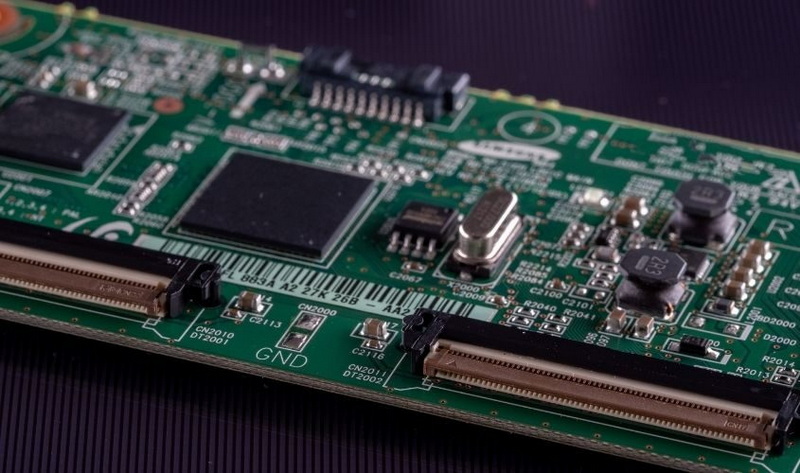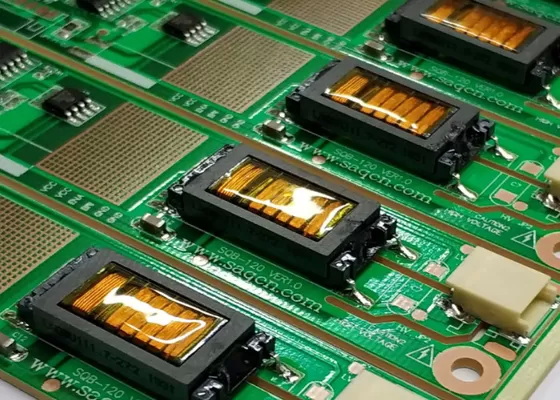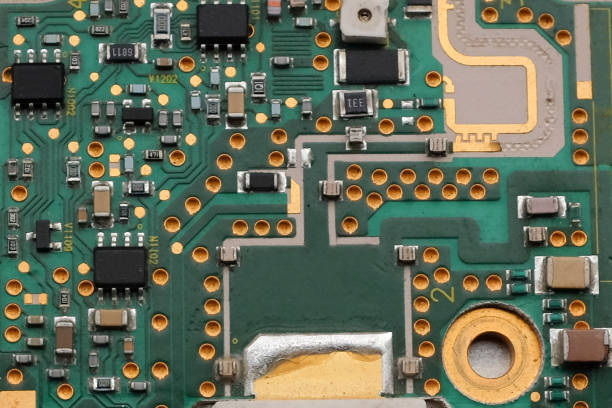Content Menu
● Introduction to SMT Stencils
>> Types of SMT Stencils
● Electroformed SMT Stencils
>> Advantages of Electroformed Stencils
>> Challenges with Electroformed Stencils
● Laser-Cut SMT Stencils
>> Advantages of Laser-Cut Stencils
>> Challenges with Laser-Cut Stencils
● Comparison of Electroformed and Laser-Cut Stencils
● Choosing the Right SMT Stencil
>> Advanced Technologies and Coatings
● Impact of Stencil Choice on PCB Assembly
>> Stencil Maintenance and Cleaning
● Future Developments in SMT Stencil Technology
● Conclusion
● FAQ
>> 1. What are the primary types of SMT stencils?
>> 2. What is the main advantage of electroformed stencils?
>> 3. Why are laser-cut stencils more common?
>> 4. How do I choose between electroformed and laser-cut stencils?
>> 5. What factors affect the choice of stencil thickness?
● Citations:
Surface Mount Technology (SMT) stencils play a crucial role in the assembly of printed circuit boards (PCBs), facilitating the precise application of solder paste onto SMD pads. Among the various types of SMT stencils, electroformed and laser-cut stencils are two of the most prominent, each with its unique manufacturing process, advantages, and applications. Understanding the differences between these two types is essential for optimizing PCB assembly processes.

Introduction to SMT Stencils
SMT stencils are thin metal sheets used to transfer solder paste onto PCBs. They are designed to match the layout of the components on the board, ensuring accurate placement and minimizing defects during the reflow soldering process. The choice of stencil type significantly impacts the efficiency and quality of the assembly process.
Types of SMT Stencils
There are primarily three types of SMT stencils: electroformed, laser-cut, and chemically etched. Each type has its own strengths and weaknesses, making them suitable for different applications.
- Electroformed Stencils: These stencils are created through an electroplating process where nickel is deposited onto a substrate. They are known for their smooth aperture walls, which enhance solder paste release and reduce bridging issues.
- Laser-Cut Stencils: Manufactured using high-precision lasers, these stencils offer high accuracy and durability. They are suitable for fine-pitch components and complex PCB designs.
- Chemically Etched Stencils: This type involves removing material through chemical etching, offering tight tolerances but less commonly used due to the rougher aperture walls compared to electroformed and laser-cut stencils.
Electroformed SMT Stencils
Electroformed stencils are produced by electroplating nickel onto a substrate, typically a stainless steel mandrel, where photoresist has been applied to define the aperture pattern. The nickel is deposited atom by atom, creating a smooth, mirror-like finish on the aperture walls. This process allows for precise control over the stencil's thickness and aperture dimensions, making electroformed stencils ideal for fine-pitch applications, such as micro-BGA and flip-chip assemblies.
Advantages of Electroformed Stencils
1. Smooth Aperture Walls: The electroforming process results in extremely smooth aperture walls, which significantly improve solder paste release and reduce the risk of solder bridging.
2. High Paste Transfer Efficiency: Electroformed stencils generally offer better paste transfer efficiency compared to uncoated laser-cut stencils, ensuring consistent solder paste application.
3. Trapezoidal Aperture Shape: The trapezoidal shape of the apertures enhances the gasketing effect, further improving paste release and reducing the need for underside cleaning.
4. Fine Detail Capabilities: Electroformed stencils can create intricate patterns and small aperture sizes, essential for advanced PCB designs and miniaturized component assembly[1].
5. Custom Thicknesses: They allow for custom thicknesses, including variations like step-up, step-down, and recessed areas, which can be tailored to specific PCB assembly needs[1].
Challenges with Electroformed Stencils
1. Higher Cost: Electroformed stencils are typically more expensive than laser-cut stencils, often costing three to four times as much.
2. Longer Production Time: The electroforming process is more time-consuming, with production times usually ranging from three to four days.
3. Alignment Issues: Misalignment between stencil apertures and PCB pads can occur, affecting solder paste deposition and requiring precise registration[4].
Laser-Cut SMT Stencils
Laser-cut stencils are manufactured by cutting apertures into a thin sheet of material, typically stainless steel, using a high-precision laser. This process allows for rapid production and high accuracy, making laser-cut stencils suitable for a wide range of applications, including fine-pitch components and complex PCB designs.
Advantages of Laser-Cut Stencils
1. High Accuracy and Precision: Laser cutting enables the creation of highly accurate and complex stencil designs, suitable for fine-pitch components.
2. Durability and Longevity: Laser-cut stencils are durable and long-lasting, making them ideal for high-volume production.
3. Quick Turnaround Time: The laser cutting process is faster compared to electroforming, allowing for quicker stencil production and shorter lead times.
4. Cost-Effectiveness: Laser-cut stencils are generally less expensive than electroformed stencils, offering a cost-effective solution for many applications.
5. Versatility: They can produce apertures in various shapes and sizes, making them versatile for different PCB designs[3].
Challenges with Laser-Cut Stencils
1. Aperture Wall Smoothness: While laser-cut stencils offer smooth aperture walls, they may not match the mirror-like finish of electroformed stencils, potentially affecting paste release.
2. Material Limitations: The choice of material for laser-cut stencils is generally limited to stainless steel, which may not provide the same level of paste release as nickel.
3. Burring: Traditional laser-cutting methods can sometimes produce burrs, although advancements in laser technology have minimized this issue[8].

Comparison of Electroformed and Laser-Cut Stencils
| Feature | Electroformed Stencils | Laser-Cut Stencils |
| Material | Nickel | Stainless Steel |
| Aperture Wall Smoothness | Extremely smooth | Smooth, but less than electroformed |
| Paste Release | Superior paste release | Good paste release |
| Production Time | Longer (3-4 days) | Faster |
| Cost | Higher | Lower |
| Accuracy | High | High |
| Suitable Applications | Fine-pitch components, µBGA | Fine-pitch components, complex PCBs |
Choosing the Right SMT Stencil
The choice between electroformed and laser-cut stencils depends on the specific requirements of the PCB assembly process. For applications requiring superior paste release and fine-pitch accuracy, electroformed stencils are often preferred. However, for high-volume production with complex designs, laser-cut stencils may be more suitable due to their faster production time and lower cost.
Advanced Technologies and Coatings
Recent advancements in laser technology and coating treatments have further enhanced the performance of both types of stencils. For instance, StenTech's BluPrint™ CVD treatment improves the surface finish of laser-cut stencils, enhancing paste transfer efficiency and durability[5]. Similarly, advancements in electroformed stencil manufacturing have allowed for thinner stencils with improved paste transfer efficiencies[1].
Impact of Stencil Choice on PCB Assembly
The choice of stencil type can significantly impact the efficiency and quality of PCB assembly. Electroformed stencils are ideal for high-reliability applications where precise solder paste deposition is critical, such as in aerospace or medical devices. On the other hand, laser-cut stencils are more suitable for high-volume consumer electronics production where cost and speed are key factors.
Stencil Maintenance and Cleaning
Proper maintenance and cleaning of stencils are crucial to ensure consistent performance. Regular cleaning helps prevent solder paste buildup and maintains the smoothness of aperture walls, which is particularly important for electroformed stencils. Additionally, using appropriate cleaning solutions and techniques can extend the lifespan of both electroformed and laser-cut stencils.
Future Developments in SMT Stencil Technology
As PCB designs continue to evolve with smaller components and more complex geometries, the demand for advanced stencil technologies will grow. Future developments are likely to focus on improving aperture wall smoothness, enhancing paste transfer efficiency, and reducing production costs. Innovations in laser cutting and electroforming processes, along with advancements in coating technologies, will play a crucial role in meeting these demands.
Conclusion
In conclusion, both electroformed and laser-cut SMT stencils have distinct advantages and are suited for different applications within the PCB assembly process. Understanding these differences is crucial for optimizing production efficiency and quality. Electroformed stencils excel in fine-pitch applications with their smooth aperture walls and superior paste release, while laser-cut stencils offer high accuracy and durability at a lower cost and faster production time.

FAQ
1. What are the primary types of SMT stencils?
- The primary types of SMT stencils are electroformed, laser-cut, and chemically etched stencils. Each type has its own manufacturing process and advantages.
2. What is the main advantage of electroformed stencils?
- The main advantage of electroformed stencils is their extremely smooth aperture walls, which enhance solder paste release and reduce solder bridging.
3. Why are laser-cut stencils more common?
- Laser-cut stencils are more common due to their high accuracy, durability, and faster production time compared to electroformed stencils.
4. How do I choose between electroformed and laser-cut stencils?
- The choice between electroformed and laser-cut stencils depends on the specific requirements of your PCB assembly. Electroformed stencils are ideal for fine-pitch applications requiring superior paste release, while laser-cut stencils are better suited for high-volume production with complex designs.
5. What factors affect the choice of stencil thickness?
- The choice of stencil thickness is influenced by factors such as component pitch, pad size, and the desired solder paste volume. Thinner stencils are suitable for fine-pitch components, while thicker stencils are used for larger components or higher-volume applications.
Citations:
[1] https://precision4pcb.com/smt-stencils/
[2] https://stencillaser.lpkf.com/en/technology/about-stencil-manufacturing
[3] https://dinamike-solution.com/2024/10/14/guide-to-smt-stencil-types-benefits-and-applications/
[4] https://app.lpkfusa.com/articles/stencil/Conquering%20SMT%20Stencil%20Challenges%202009-03.pdf
[5] https://www.stentech.com/company/cvd-treatment-for-smt-stencils
[6] https://ksnpcb.com/what-is-stencil-in-pcb/
[7] http://microstencil.co.uk/Papers/Latest%20technical%20advancements%20in%20stencil%20printing%20of%20UFP%20solder%20paste.pdf
[8] https://www.stentech.com/products/stencils/laser-cut-smt-stencils




















